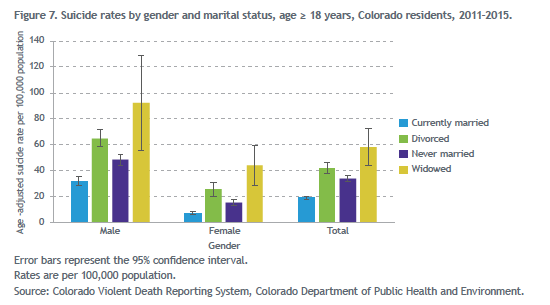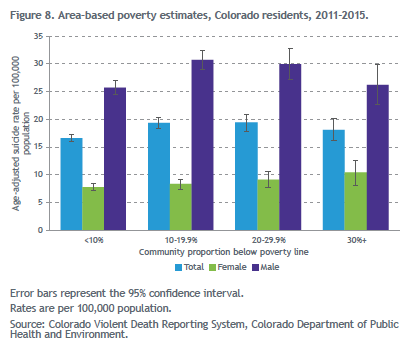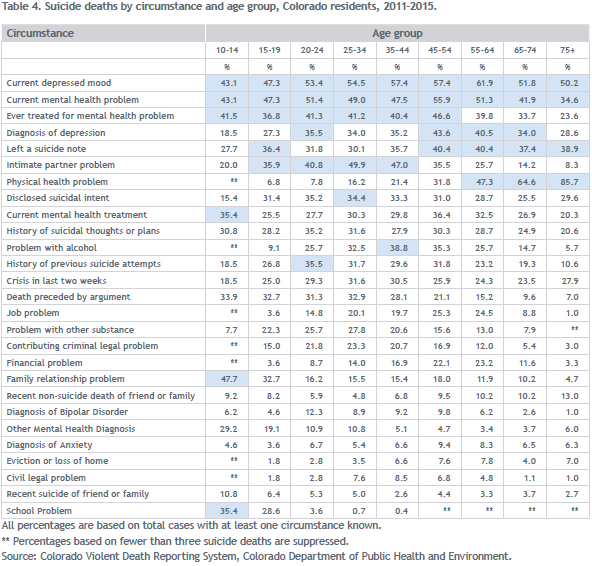The Problem
Suicide is a critical public health concern that adversely affects a diverse population of Americans and does not discriminate based on race, color, gender, or identity. The number of suicides has increased over the past decade in the United States and Colorado and is at epidemic levels in (3 times the national average in 2019) in high altitude communities.
In 2015, Colorado had the ninth highest suicide rate (@19.5 deaths per 100,000 population) among all states and it was the seventh leading cause of death in Colorado. From 2011 to 2015, the suicide deaths in Colorado outnumbered deaths by motor vehicle collision, unintentional poisoning, falls, or homicide. By 2019 the suicide rate rose to 21.3 deaths per 100,000 and by the end of that decade (2010–2019) suicide rates were 2.5 times greater than those in the previous 2 decades (1990–2009)!

Demographics
From 2011 through 2015, the number of male suicides was more than three times the total number of female suicides (3,855 and 1,175 deaths, respectively). Among male suicides, the number of deaths was highest in the 45–54 year age group (765 deaths). A similar trend was seen among female suicides: The highest number of deaths occurred in the 45–54 year age group (292 deaths).

Rural residents and whites/non-Hispanics had the highest rate of suicide, and have the highest rate of suicide. Divorced or widowed men and women were found to have the highest rate of suicide, and men living at or below the federal poverty level are three times more likely than women to commit suicide.


Methods
Male suicide deaths most frequently involved the use of a firearm as lethal means (55.8%), followed by hanging/asphyxiation/suffocation (25.2%) and poisoning (12.7%). In contrast, the greatest proportion of female suicide deaths involved the use of poison as lethal means (43.0%), followed by firearm (26.9%) and hanging/asphyxiation/suffocation (24.3%) (Figure 9). The method of suicide also varied according to age. As age increased, the use of a firearm as a lethal method increased; whereas the use of hanging/asphyxiation/suffocation was highest among younger victims.


Summary
For years 2011 through 2015, the rate of mortality from suicide among Colorado residents has consistently remained at a high level. In recent years, the number of suicide deaths has surpassed the number of deaths due to motor vehicle collisions, and suicide has become the seventh leading cause of death in Colorado. Not only does the state maintain an average suicide rate nearly 1-1/2 times greater than the national rate (Colorado crude suicide death rate was 19.5 in 2015 (21.3 in 2019) vs the US rate @13.3 in 2015), the state’s average suicide rate has ranked among the 10 highest in the nation for several consecutive years.
Even beyond the United States, those who live in counties designated rural or frontier are generally considered to be at increased risk of death by suicide compared to those who live in urban designated counties.
The male population consistently experienced suicide rates over 1-1/2 times greater than the Colorado state average and over three times greater than females. Male Colorado residents between the ages of 35 and 54 years not only experienced the highest suicide rates among the age groups and genders, they have consistently contributed the largest proportion of all Colorado resident suicides over the past five years (28%).










